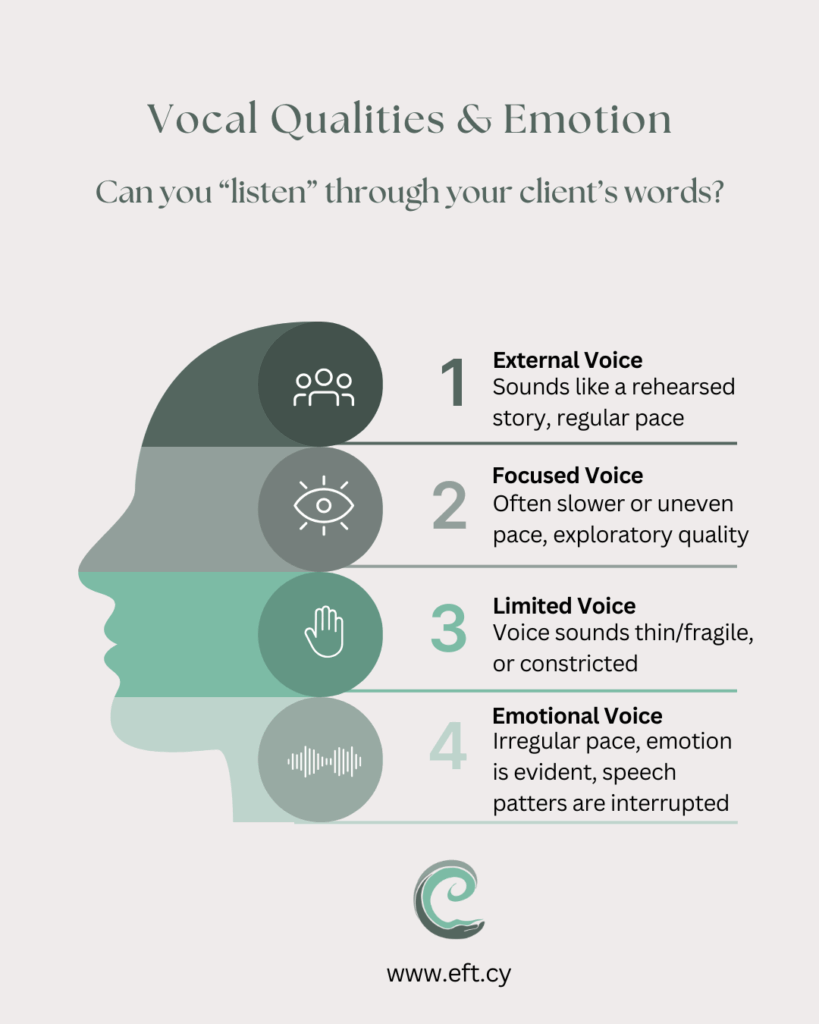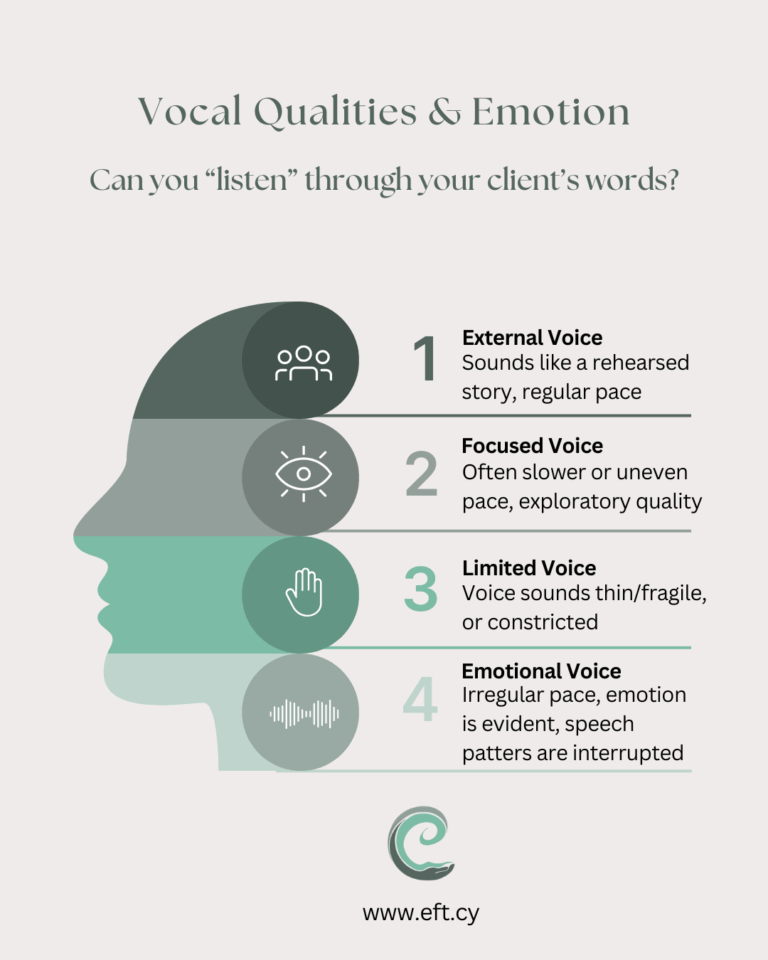
What does my client’s voice say about the story they are sharing and how can I intervene?
Facilitating appropriate levels of emotional arousal for processing of pain or processing of maladaptive/problematic emotions is essential in Emotion Focused Therapy.
We have seen in research that clients who do better in therapy are the ones who are enabled to: (1) access the pain and (2) to process it at appropriate times in therapy. However, no one wants to approach pain! So clients may come for therapy but in fact restrict/stop themselves from going to those painful places. All they want is to stop feeling the pain and in their effort to do so they try to stop themselves from feeling. Clients have many ways of stopping themselves of talking about what’s painful- either by drinking water that minute they are approaching something painful, or maybe striking a smile or taking a big breath, or changing the subject and the list goes on. This happens when in fact the therapist can “hear” the emotion being chocked (limited voice). Other times they tell us stories they have said many times to others; they may say these stories in a kind of neutral manner and a fast/loud quality of voice (external voice) which indicates low emotional activation.
Other times emotions get over-activated making the client feel overwhelmed. In those moments the quality of their voice is more emotional, and regular speech patterns are disrupted by emotion.
All these are signs that the client is approaching something important, or trying to protect themselves from something painful they need help (from the therapist) to go at. So all these cues are calling for an intervention from the therapist.
Consistent research findings from different approaches show that it’s not desirable nor productive if the client enters a hypo- or hyper- activation and the autonomous system is turned off or firing violently. The client is not able to process emotions in a productive way. In those circumstances the client ends up unable to find words for their emotions and unable to make meaning of their emotions. Or in other examples they may get stuck in stories or painful emotions. They may end up repeating themselves, which can result in feeling that therapy is not going anywhere. In those moments the therapist needs to know how to help the client get unstuck (from maladaptive emotion) so that the process of therapy moves forward in a productive manner and to more adaptive emotions.
We have seen in research that heightened level of emotional arousal is necessary for client processing and therapeutic improvement (e.g., Missirlian, Toukmanian, Warwar, Greenberg, 2005). In other words emotional arousal is indeed an important predictor of reduction in depressive and psychopathological symptomatology and of increased levels of self esteem but only with respect to arousal in motherly (Rosner,1996; Warwar,2003). The when and the how is however essential! When does the therapist help the client deepen (or not) and how.
As EFT therapists we want to be able to help the client deepen and explore emotion in appropriate moments. In other moments it may be helpful to facilitate client’s understanding in how they stop themselves from actually going to those places we need to go to process things (you can call this avoidance of pain if you like, we call it protection from pain). In other moments when clients are dys-regulated and the “emotion has them instead of them having the emotion”, we want to help them feel grounded, connected and safe.
Therapist’s Empathic attunement in the client’s vocal quality and appropriate empathic interventions at appropriate timings can help the client increase the depth of emotional experiencing. Different empathic interventions (we identified of empathy in EFT) increase the client’s ability to have their attention turned inward and to “look” for, or be in touch with, the emotions in the body. They also make sense of the experience by putting words to the feelings with a focused and emotionally-oriented voice, and a congruent emotional expression (Geller, 2019).
When Do We Process What Hurts?
When (and how) is productive to deepen client’s experiencing? When (and how) is productive to help client regulate?
And then when do we go back to really process what hurts?
This is where the magic happens!
If you want to learn more about the types of empathic interventions and empathic attunement please reach out to info@eft.cy for more resources.




